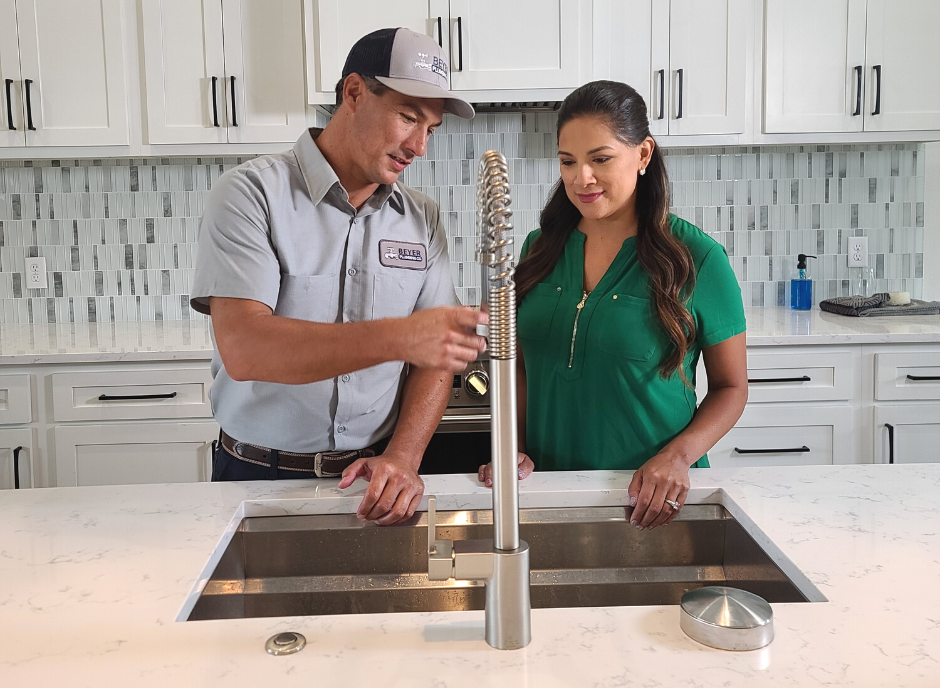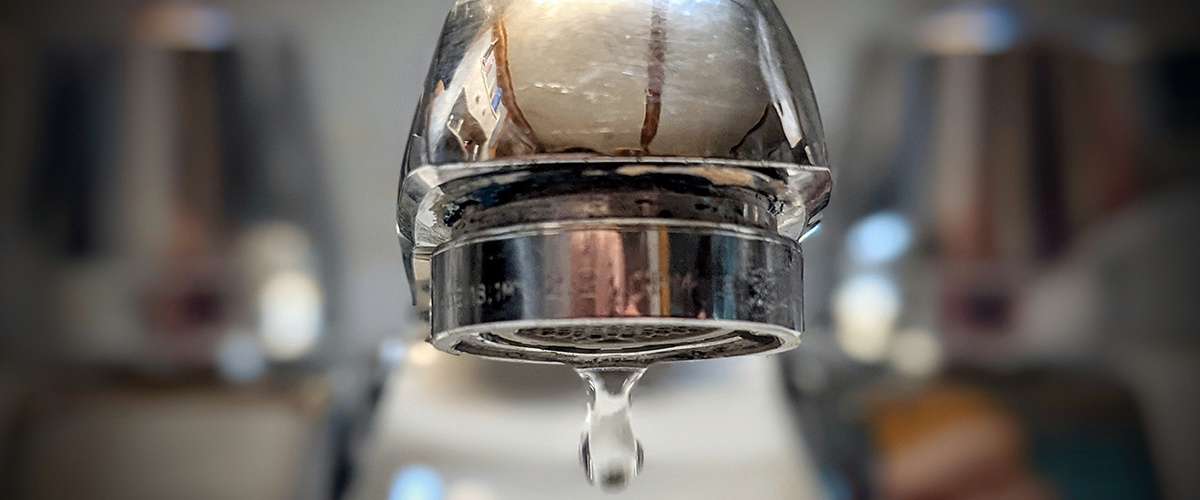Just about every person maintains their own individual piece of advice with regards to Leaky Faucets: Why They Happen & What to Do About Them.

Leaking faucets may appear like a minor trouble, however their influence surpasses just the inconvenience of the sound. From drainage to incurring unnecessary economic costs and wellness threats, neglecting a trickling tap can bring about various consequences. In this write-up, we'll explore why it's vital to address this typical household issue quickly and efficiently.
Wastefulness of Water
Environmental Impact
Dripping taps add substantially to water wastefulness. According to the Epa (EPA), a single faucet trickling at one drip per second can throw away more than 3,000 gallons of water each year. This not only stress water sources however likewise impacts ecosystems and wild animals depending on them.
Financial Prices
Increased Water Bills
Beyond the ecological impact, dripping faucets can inflate water bills significantly. The gathered wastefulness with time translates right into greater utility expenditures, which can have been stayed clear of with timely fixings.
Possible Home Damage
Additionally, long term leaking can result in harm to components and surface areas surrounding the tap. Water build-up can cause discoloration, rust, and also structural issues if left ignored, causing extra repair service costs.
Health and wellness Worries
Mold and Mold Growth
The consistent visibility of moisture from a leaking tap produces a suitable atmosphere for mold and mildew growth. These fungi not just endanger interior air high quality but also present wellness threats, specifically for individuals with respiratory system problems or allergic reactions.
Waterborne Illness
Stationary water in leaking taps can end up being a breeding place for bacteria and other virus, increasing the threat of waterborne conditions. Impurities such as Legionella microorganisms grow in stagnant water, possibly leading to significant ailments when consumed or inhaled.
DIY vs. Professional Repair work
Pros and Cons of DIY Repair Work
While some might try to repair a dripping tap themselves, do it yourself repairs come with their own collection of challenges. Without proper understanding and tools, do it yourself attempts can intensify the concern or lead to incomplete repairs, lengthening the trouble.
Advantages of Hiring a Specialist Plumber
Employing a specialist plumber makes sure that the underlying root cause of the trickling faucet is addressed properly. Plumbing professionals have the knowledge and tools to diagnose and repair tap issues successfully, conserving time and minimizing the danger of additional damages.
Step-by-Step Guide to Taking Care Of a Dripping Tap
Tools Needed
Prior to trying to deal with a trickling tap, collect the essential devices, consisting of a flexible wrench, screwdrivers, substitute components (such as washers or cartridges), and plumber's tape.
Common Tap Issues and Their Solutions
Determine the type of faucet and the particular issue creating the drip. Usual problems include worn-out washing machines, rusty shutoff seats, or malfunctioning O-rings. Describe maker directions or online tutorials for step-by-step guidance on repairs.
Preventive Measures
Regular Maintenance Tips
To avoid trickling taps, execute routine maintenance such as cleaning aerators, examining for leakages, and replacing damaged components promptly. Additionally, consider installing water-saving tools or updating to much more effective fixtures.
Value of Prompt Repair Works
Attending to leaking faucets as quickly as they're discovered stops further water waste and possible damages, inevitably conserving both water and cash in the future.
Influence On Building Value
Assumption of Well-Maintained Residential Property
Maintaining a building in good condition, including resolving upkeep problems like leaking faucets, boosts its perceived worth and desirability amongst possible buyers or renters.
Impact on Resale Value
Properties with properly maintained plumbing components, including taps, command higher resale worths in the property market. Addressing dripping faucets can contribute to a positive impact throughout property evaluations and arrangements.
Ecological Obligation
Private Contribution to Conservation
Taking responsibility for fixing trickling taps straightens with more comprehensive initiatives toward water conservation and environmental sustainability. Every person's actions collectively make a considerable impact on preserving priceless sources.
Sustainable Living Practices
By prioritizing prompt repairs and taking on water-saving habits, people contribute to lasting living methods that profit both present and future generations.
Verdict
Addressing a dripping faucet goes beyond mere ease; it's a crucial step towards preserving water, minimizing economic costs, and securing health and residential or commercial property. Whether with do it yourself fixings or expert assistance, acting to fix trickling taps is a tiny yet impactful method to promote liable stewardship of resources and add to a much healthier, much more sustainable future.
How to Fix a Dripping or Leaky Faucet
A leaking faucet is one of the most common problems that homeowners encounter, but it being commonplace doesn’t make it any less annoying. The constant drip drip drip of a leaking bathtub faucet, showerhead, or sink tap can disturb your home’s serenity. Left neglected, a dripping faucet can also result in higher water bills and discoloration or mold growth in your sink or plumbing fixtures.
Fortunately, you don’t have to be a trained plumber to know how to stop a dripping faucet. With some basic tools, replacement parts, and a little patience, leaky faucet repair is a breeze. In this article, we’ll explain what causes dripping faucets and how you can fix them.
What Causes a Leaking Faucet?
Kitchen and bathroom faucets come in all manner of designs, but most involve some combination of valves, O-rings, seals, and washers. The O-ring is usually the weakest link, but any one of these pieces can wear down over time. Heat, moisture, temperature fluctuations, minerals, mold, and movement can contribute to warping and corrosion, breaking the watertight seal. This just comes with the territory of being a homeowner. Everything is always subject to wear and tear, and some component parts of your appliances and fixtures need to be replaced on occasion. At least replacement O-rings are cheap!
More rarely, dripping faucets can be a symptom of excessively high water pressure. Were this the case in your home, you would probably notice that the leak is not isolated to one faucet. Water pressure issues are harder to resolve on your own. We recommend contacting a professional plumber if you suspect your water pressure is too high.
How to Fix a Dripping Faucet
Pipe wrench or monkey wrench Allen wrench set Screwdrivers Old towel or rag Shut off the water.
Before you do anything, you need to turn off the water to keep from drenching your kitchen or bathroom. You should find a valve under the sink and against the wall. Once you’ve turned this valve, try turning the faucet on to confirm that the water source has been cut off.
If you can’t locate your local valve for the faucet you’re working on, you can always shut off the water to the house at the main valve. Of course, this will prohibit anyone from using the sinks, showers, or toilets while you’re working on the faucet that’s giving you trouble.
Plug or block the drain.
You’ll be disassembling the faucet and removing some small bits of hardware. Plug the drain with a stopper or rag to avoid the possibility of a small screw falling into your P-trap.
Take apart the faucet assembly.
There are several varieties of kitchen and bathroom faucets, each with its own manner of assembly. For detailed instructions on how to disassemble your faucet, you can refer to the fixture’s manual or contact the manufacturer. If you know whether you have a ball, disc, cartridge, or compression faucet, you can find detailed schematics online.
In general, you need to begin by removing the faucet handles. You might notice a small screw that you’ll need to remove with a screwdriver or Allen wrench. If you don’t see any visible securing hardware, it’s likely hidden under a decorative cap that can be unscrewed or popped off with flathead screwdriver.
Remove each piece methodically, consulting a schematic when necessary. Take notes or arrange the pieces in such a way to make it easier to correctly reassemble the faucet later.
Remove the cartridge.
Once you’ve removed the handles and securing hardware, you should be able to remove the valve cartridge or stem. Some cartridges will slide right out. Other faucet models will require you to loosen a nut with a pipe wrench before you can remove the valve stem.
Examine the exposed hardware.
With the cartridge or stem removed, inspect the component parts. Check the rubber O-rings for wear and tear. Also examine the seat washer for corrosion or other damage. These pieces are usually the responsible parties for a dripping faucet, but it’s worth inspecting the other component parts while you have the faucet disassembled.
Find replacement parts.
Once you’ve identified which faucet component has failed, find an identical replacement. Your local hardware store should have O-rings, seat washers, and other standard components in stock. If you have a luxury or uncommon faucet, you may have to contact the manufacturer for a replacement part.
It’s a good idea to take your old parts with you to the hardware store so you can compare them with the store’s inventory and be sure you’re purchasing the correct replacement.
Reassemble the faucet.
With your new parts in hand, reconstruct the faucet and handles. Don’t be tempted to overtighten screws or nuts. You might think this could create a better seal, but it can instead damage or bend a delicate part of the assembly and create a new problem for you.
Turn on the water and test the faucet.
The only thing left to do is test your work. Unplug the sink, turn the water back on, and try the faucet. Congratulate yourself on a job well done!
https://www.libertyhomeguard.com/how-to-fix-a-dripping-or-leaky-faucet/

I discovered that post on What Causes Leaky Faucets & How To Fix Them when doing a search on the web. Sharing is nice. Who knows, you may be helping someone out. I cherish your readership.